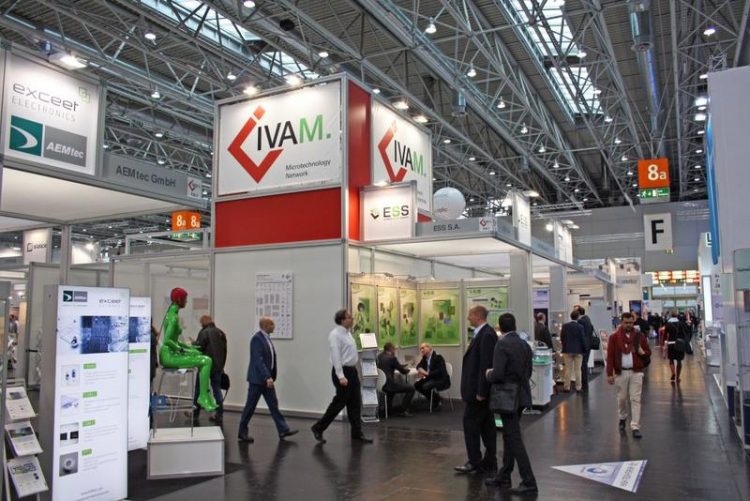COMPAMED 2017: New manufacturing processes for customized products

The product market of the IVAM Microtechnology Network was the largest joint stand of the fair. IVAM
The COMPAMED, which took place parallel to the MEDICA medical technology trade fair from November 13 to 16 in Düsseldorf, impressed again with its great internationality. Nearly 20,000 trade visitors gathered information about trends and topics in the medical supply industry in halls 8a and 8b.
The product market of the IVAM Microtechnology Network was the largest joint stand of the fair. On more than 700 m², international exhibitors gave a comprehensive overview of high technology applications and products for medical technology.
This year, a hot topic on the product market and the forum has been innovative manufacturing processes for customized medical devices, such as new approaches in the field of 3D printing. The topic of MDR, the new European medical device regulation, was also on everyone's lips. In particular, the small and medium-sized companies, which include the majority of the exhibitors, are massively unsettled by the new regulations, which are to be implemented until 2020.
“Due to the new regulations, small component manufacturers are now facing the same high standards of documentation and quality management that up to now only the distributor has had to make”, IVAM Managing Director Dr. Thomas R. Dietrich explained. “Especially small companies lack the human and financial resources. Moreover, the time given to companies to organize this change is extremely tight with the 2020 target.”
The COMPAMED HIGH-TECH FORUM, which accompanied the trade fair and was also organized by IVAM, addressed the problem on the second day of the fair as part of the session “Medical Devices 2020 – Everywhere Intelligent”. The session on “Laser and Photonics Applications” organized by IVAM in cooperation with EPIC (European Photonics Industry Consortium) was also well received by the visitors: more than 300 visitors informed themselves during the lectures, for example about laser-based production processes and photonics solutions for biomedical applications.
Cooperation and networking between international component manufacturers once again played a major role at the IVAM joint booth. For example, the BMWi-funded ToGeTher network project links SMEs with one another and with research institutions and health care stakeholders, focusing on the rapidly growing markets of wearables and point-of-care diagnostics. Furthermore, as part of a cooperation project to promote cooperation between Japan and Germany, more than 70 arranged business meetings took place in order to initiate and develop business contacts.
The exhibitors were again very satisfied with the number and quality of discussions at their exhibition stands. Around a week after the end of the trade fair, a majority of the exhibitors of the IVAM product market has already decided to participate again in 2018, so that 90% of the available stand space is already occupied. Information on the IVAM product market “High-tech for Medical Devices” at COMPAMED 2018 can be found on the Internet at http://www.ivam.de/events/compamed2018.
Media Contact
All latest news from the category: Trade Fair News
Newest articles

Sea slugs inspire highly stretchable biomedical sensor
USC Viterbi School of Engineering researcher Hangbo Zhao presents findings on highly stretchable and customizable microneedles for application in fields including neuroscience, tissue engineering, and wearable bioelectronics. The revolution in…

Twisting and binding matter waves with photons in a cavity
Precisely measuring the energy states of individual atoms has been a historical challenge for physicists due to atomic recoil. When an atom interacts with a photon, the atom “recoils” in…

Nanotubes, nanoparticles, and antibodies detect tiny amounts of fentanyl
New sensor is six orders of magnitude more sensitive than the next best thing. A research team at Pitt led by Alexander Star, a chemistry professor in the Kenneth P. Dietrich…





















